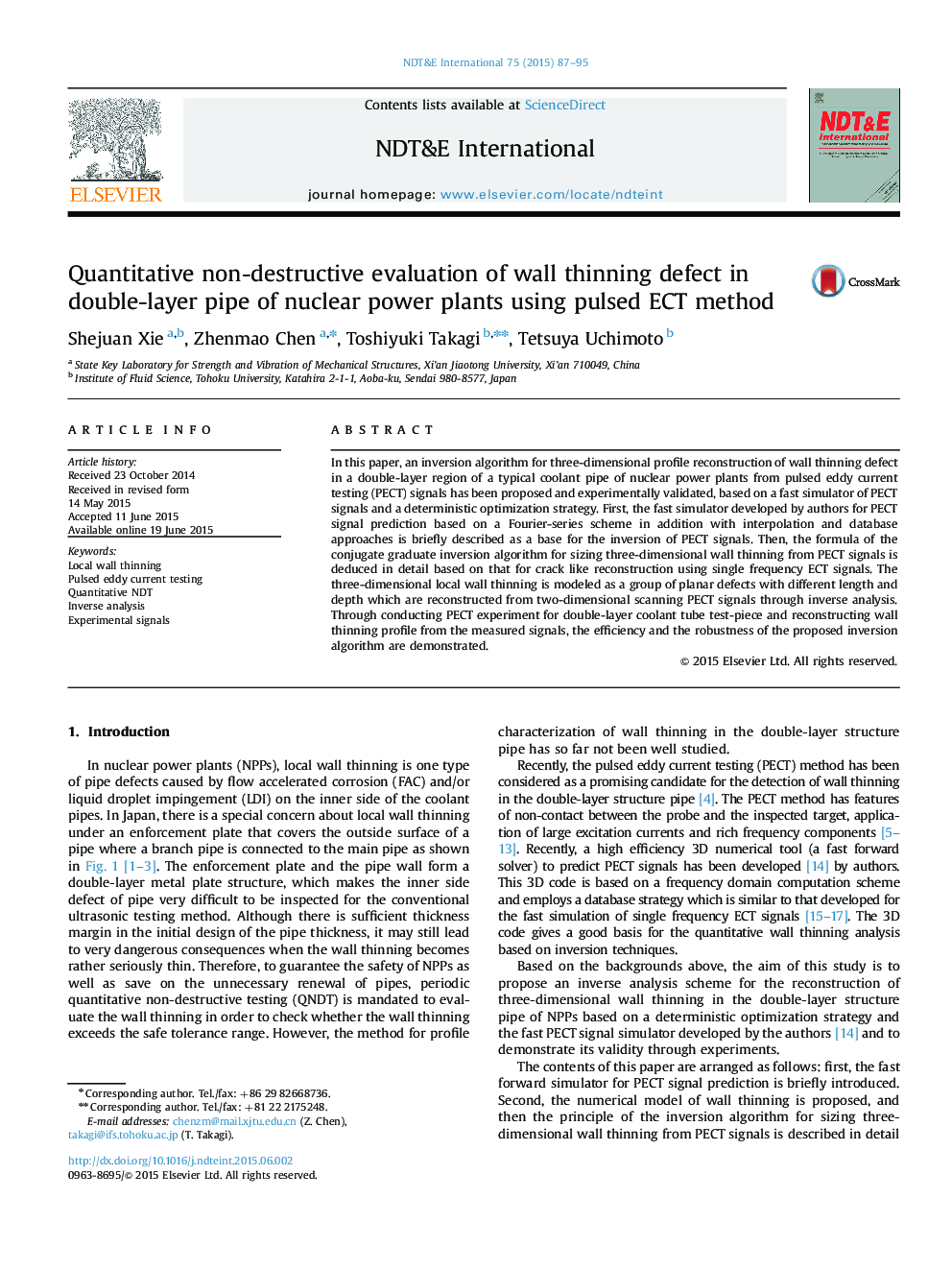| Article ID | Journal | Published Year | Pages | File Type |
|---|---|---|---|---|
| 295018 | NDT & E International | 2015 | 9 Pages |
•Formulae for gradient calculation are deduced based on adjoint field for sizing complicated shape defect from PECT signals•Wall thinning is modeled as planar defects with its edge approximated by a piece-wise line, position of edge point is sized•The PECT experiments for a double-layer region of a typical coolant pipe of nuclear power plants are conducted•The artificial wall thinning defects in double-layer tube are reconstructed with these measured signals•Efficiency/robustness of proposed algorithm against measurement noise and model error are demonstrated
In this paper, an inversion algorithm for three-dimensional profile reconstruction of wall thinning defect in a double-layer region of a typical coolant pipe of nuclear power plants from pulsed eddy current testing (PECT) signals has been proposed and experimentally validated, based on a fast simulator of PECT signals and a deterministic optimization strategy. First, the fast simulator developed by authors for PECT signal prediction based on a Fourier-series scheme in addition with interpolation and database approaches is briefly described as a base for the inversion of PECT signals. Then, the formula of the conjugate graduate inversion algorithm for sizing three-dimensional wall thinning from PECT signals is deduced in detail based on that for crack like reconstruction using single frequency ECT signals. The three-dimensional local wall thinning is modeled as a group of planar defects with different length and depth which are reconstructed from two-dimensional scanning PECT signals through inverse analysis. Through conducting PECT experiment for double-layer coolant tube test-piece and reconstructing wall thinning profile from the measured signals, the efficiency and the robustness of the proposed inversion algorithm are demonstrated.
